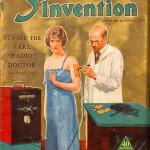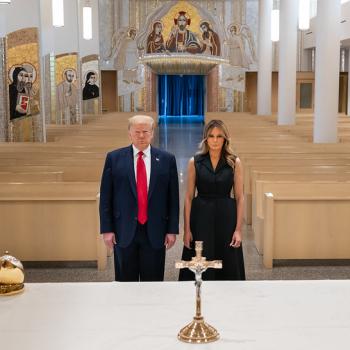Christianity is a matter of belief. Also actions. What the non-believing world thinks about it is, strictly speaking, irrelevant.
And yet, what the non-believing world thinks about Christianity can be of interest to Christians. If the world thinks better of us, it might give us more of a hearing.
Reason is a libertarian magazine that, while it supports religious liberty, favors, well, “reason” rather than faith. But it has recently published an article by Emma Camp entitled How the Elite Changed Its Mind on Christianity.
Here is her thesis:
As the decline in religious attendance has slowed, the past few years have also seen a clear rise in the status of religion. It’s becoming more and more socially acceptable to be religious in elite intellectual spaces—something that could have a real impact on how religion is perceived by everyone else.
Previously, she says, New Atheism “effectively framed religion, Christianity in particular, as fundamentally anti-intellectual and subtly low-class.” She continues,
These New Atheists seized on the cringeworthy, distinctly lower-middle-class aesthetics of Bush-era Christianity. The aesthetics of many non-denominational Evangelical churches—unadorned auditoriums, cheesy worship music, and the occasional smoke machine or pledge to the Christian flag—fit within a broader cultural language of suburban kitsch.
Today, though, we are having “a cultural moment in which religion is having a distinctly aesthetic upgrade,” she says. “Religion is, in short, becoming cool again among the cultural elite.”
She contrasts the way movies like Jesus Camp (2006) mocked Christianity, whereas the recent Wes Anderson film The Phonecian Scheme take it seriously. She shows how today’s intellectuals are now tending to acknowledge the importance of religion, to the point of New Atheist author Richard Dawkins now calling himself a “cultural Christian.”
With supreme irony, Camp credits Donald Trump for disassociating Christianity from Republican politics! “Donald Trump—hardly anyone’s idea of a religious social conservative—swallowed the Republican party whole, effectively squelching religious grandstanding about the sanctity of marriage.”
The Supreme Court established gay marriage and struck down Roe v. Wade, thus taking away evangelical activists’ main issues. And the new pro-abortion laws on the state level have led the Republican Party, at Trump’s behest, to drop the issue from its platform.
Yes, evangelicals are still trying to push their political and cultural agenda, but in their zealous support for Trump, they are not bothering to be religious, as such. Just mean. “Instead,” she says, “the Republican Party has adopted a distinctly areligious, distinctly mean posturing that’s influenced more by Andrew Tate than Billy Graham.”
Apparently, the cultural elite no longer worry that the evangelicals will take over and establish a theocracy that will force them to be good. In Camp’s characterization, evangelical Trump supporters don’t care all that much about people being good, including their presidential hero. “As a result,” she says, “religious observance has less of a right-wing association.”
“Gone, for now at least, are the days when religion exists in pop culture purely as an anti-intellectual, lower-class phenomenon.” But not all manifestations of Christianity have risen in social status. Just the high-church variety. She concludes,
Much of this comes down to the way Catholicism, in particular, is becoming fashionable again, with many young adults citing an attraction to the aesthetics of “smells and bells” high church worship. “[I] always liked the aesthetic elements of Catholicism,” one young convert told Free Press writer Madeleine Kearns, adding that she “loved the architecture and the stained glass” of many Catholic churches, “and how much detail and symbolism was there.” Even as the “tradcath” resurgence remains a right-coded phenomenon, it is at the very least a fixation of the intellectual right. . . .It also helps that Catholicism, Orthodoxy, and other “high church” denominations have largely been left out of the discourse around “Christian nationalism.”
Religion became cool again among the educated elite once it gained an association with good aesthetics, high art, and sacred music—not Bush-era Republican soft theocracy.
Today, one can belong to the ideas-making class—an aspiring public intellectual or artist—and still be religious, so long as one steers clear of evangelical kitsch. Whether or not a real religious revival is underway in American public life, one thing is clear: The cool kids aren’t the smug, strident atheists anymore—they’re the Christians.
OK, fine. But social status is one of the worst reasons to turn to Christianity. I think much of what the Bible says about the temptations of “the world” have to do with succumbing to the dominant fashions and attitudes of the surrounding culture, a surrender to peer pressure that comes from a twisted ambition to rise in social status. Social climbing does great harm. The world hates Jesus, so it hates us, as well (John 15:18-19).
And Camp gets a number of things wrong. For example, Catholicism and Orthodoxy are untainted by Christian nationalism? How about Integralism, the Catholic version of Reformed theocracy and the Pentecostal Seven Mountain Mandate that many right wing Catholics are pushing? And what about the connection between Russian nationalism and the Orthodox Church? She’s also wrong about evangelical Trump-supporters just being mean.
But what I find interesting, confessional Lutheran that I am, is what she says about the current appeal of “high church worship” compared to “evangelical kitsch” (her words, not mine). For a long time, church growth experts told us that emulating “evangelical worship styles”–“unadorned auditoriums, cheesy worship music, and the occasional smoke machine” (her words, not mine)–were the way to appeal to the culture, and that we should jettison “the aesthetics of ‘smells and bells’ high church worship,” “the architecture and the stained glass,” and “good aesthetics, high art, and sacred music.” But now, apparently, things have changed.
I want to stress that aesthetics alone, like social status, is a terrible way to choose a religion. That should be a matter of what you believe, and you should believe what you are convinced is true, according to the Scriptures.
But church growth experts, Missional Lutherans, and other advocates of cultural outreach, note well that now it’s the liturgy and all that goes with it that is making Christianity “cool.” Please adjust your recommendations and contemporary worship styles accordingly. I thank you in advance.
Photo: Divine Service by adcarlson2 via Lutheran Wikia













